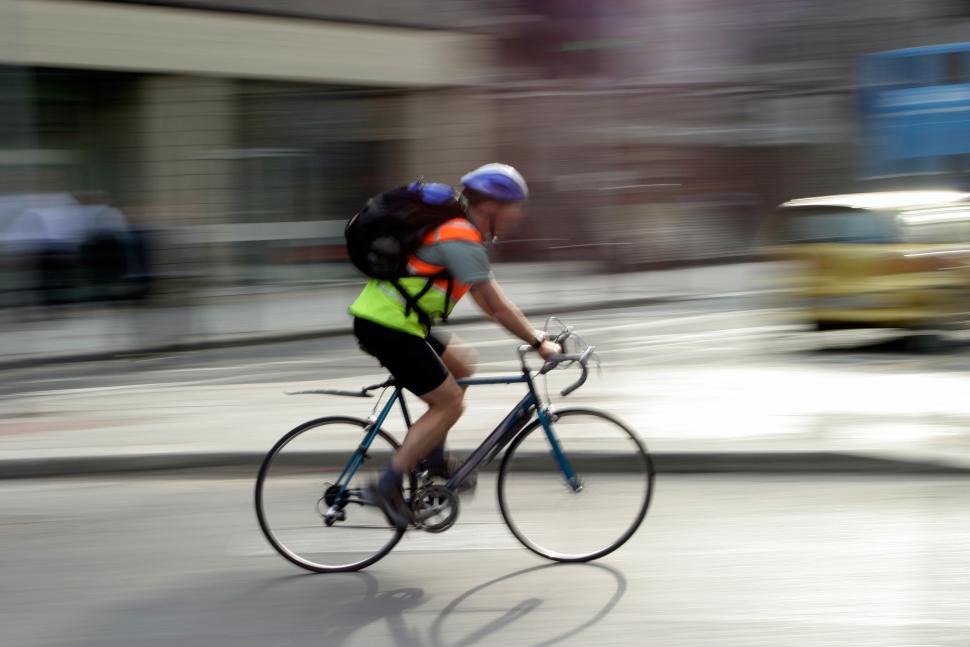- News
- Reviews
- Bikes
- Components
- Bar tape & grips
- Bottom brackets
- Brake & gear cables
- Brake & STI levers
- Brake pads & spares
- Brakes
- Cassettes & freewheels
- Chains
- Chainsets & chainrings
- Derailleurs - front
- Derailleurs - rear
- Forks
- Gear levers & shifters
- Groupsets
- Handlebars & extensions
- Headsets
- Hubs
- Inner tubes
- Pedals
- Quick releases & skewers
- Saddles
- Seatposts
- Stems
- Wheels
- Tyres
- Tubeless valves
- Accessories
- Accessories - misc
- Computer mounts
- Bags
- Bar ends
- Bike bags & cases
- Bottle cages
- Bottles
- Cameras
- Car racks
- Child seats
- Computers
- Glasses
- GPS units
- Helmets
- Lights - front
- Lights - rear
- Lights - sets
- Locks
- Mirrors
- Mudguards
- Racks
- Pumps & CO2 inflators
- Puncture kits
- Reflectives
- Smart watches
- Stands and racks
- Trailers
- Clothing
- Health, fitness and nutrition
- Tools and workshop
- Miscellaneous
- Buyers Guides
- Features
- Forum
- Recommends
- Podcast
 Commuter cyclist
Commuter cyclistDfT figures reveal that cyclists rode further in 2014 – but drivers drove further too
New Department for Transport (DfT) figures reveal that the distance cycled on roads or next to roads in 2014 was 3.8 per cent higher than in 2013. Motor vehicle traffic also rose by 2.4 per cent – the fastest annual growth since 1996.
With 3.25bn miles travelled, UK cyclists covered more distance than either motorcycles or buses (both 2.8bn) and bike traffic has now risen every year since 2008.
However, greater distances have been covered in the past. Estimates began in 1949 with 14.7bn miles and while there was steady decline to an all-time low of 2.3bn miles in 1973, levels rose again to 4bn miles for three successive years in the early Eighties.
Nevertheless, the 2014 figure is the highest since 1991 with the data indicating that the increase from 3.1bn miles in 2013 has largely been down to growth in London, the South-East and the North-East, each of which shows an increase of 100 million miles.
Sustrans Policy Director, Jason Torrance, said the rise demanded greater cycling investment:
"It's heartening to see cycling on the rise yet again in these latest figures. More and more people are taking to bikes to avoid the cost, inconvenience and congestion that comes with running a car. The numbers also make the argument for more of the transport budget to be spent on cycling infrastructure even more compelling. Demand for cycling is swelling every year and Government must do more to help keep them safe and provide convenient routes.
"Our vision is to transform the UK so that everyone can choose to walk and cycle to school and work, for fun and transport. To do this we need a statement from the very top of Government to make walking and cycling a cross-departmental priority. We also need funding for cycling and walking equivalent to five per cent of the transport budget, and a Cycling and Walking Investment Strategy that contains a long-term vision and targets."
However, the DfT figures also reveal a marked rise in other forms of traffic. Motor vehicle traffic peaked at 314.1 billion vehicle miles in 2007 and then fell for three consecutive years – the first consecutive annual falls since traffic records began. Between 2010 and 2013 traffic remained largely stable, but it has again shown strong growth of 2.4 per cent from 2013 and 2014.
The DfT points out that it is not yet clear whether this growth is a fluctuation around a stable figure or a signal of a return to sustained growth, but it does say that this is the fastest annual growth since 1996.
Alex has written for more cricket publications than the rest of the road.cc team combined. Despite the apparent evidence of this picture, he doesn't especially like cake.
Muddyfox tour 100's I've wide & flat feet plus there's the optional choice of using cleats with them...
Just doing the Lord's work in case anyone's interested in this product. This Mucoff Pump is a £100 rebrand of an £85 Rockbros rebrand of a £60...
You've watched ESPN before right ?
You forgot ignoring half the race to show awkward interviews with the riders' Proud Parents™ instead.
Obviously it means 'springing out of the bunch' on a critical sector. Or maybe it's referring to the time of year.
Car crashes through garden wall for second time in 18 months https://www.wiltshire999s.co.uk/car-crashes-garden-second-time/
Woman taken to hospital after flipping car onto roof in Trowbridge...
Its blindingly obvious from the image that the DKE of the buses include the mirrors which extend to nearly reach the edge of the tarmac pavement on...
It's sad when being very good at your job - any job - isn't enough to earn a decent living. It shouldn't be that way....
Bigly!